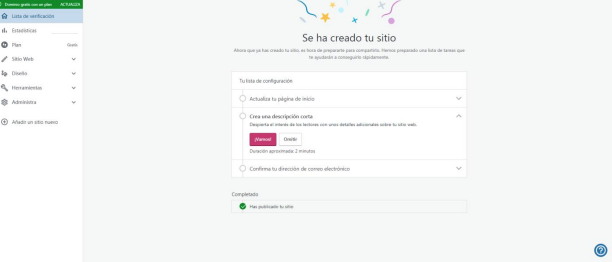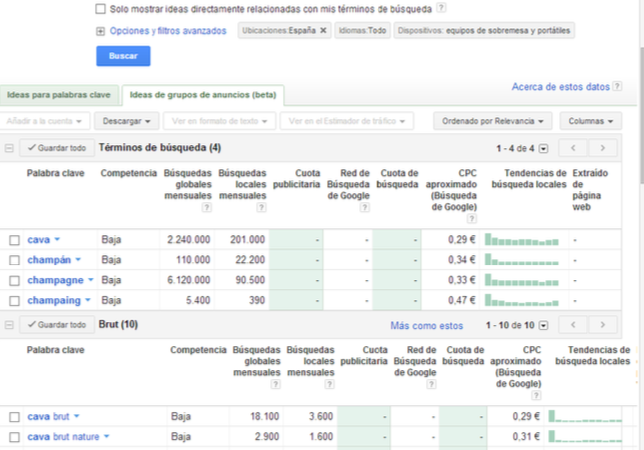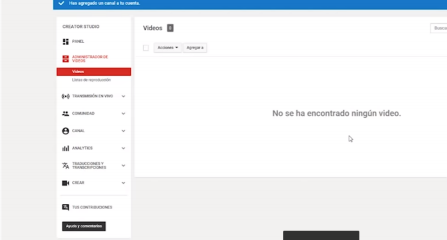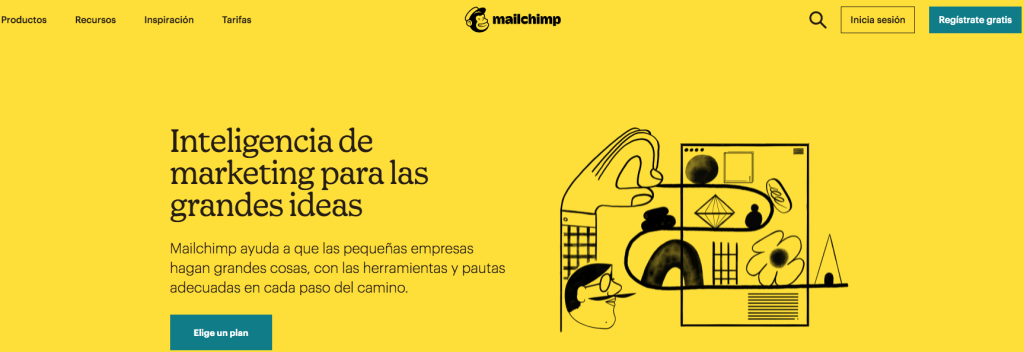Lesson 6: Digital marketing tools for personal branding (3 videos, 1:30 H)
Organization of information on the Internet
Google Drive
We have already told you about Google Drive from the beginning in module I, remember its potential.
evernote
https://www.evernote.com
It consists of a cloud storage to easily store papers, photos, web links, blogs,
documents, emails, handwritten notes, tweets, voice notes, screenshots, to-do lists,
even recordings.
It becomes a second personalized brain. Thanks to its powerful search engine, you can
find any information you have stored in seconds.
Symbaloo EDU
http://edu.symbaloo.com/
Given the number of applications that we use on a daily basis, we have to type in a
repetitive every day the same URLs in the browser. to solve this
problem, there is Symbaloo EDU an application that allows you to organize and group in a
the only place for the online tools and websites you use every day.
Organization of meetings/appointments
calendar
Calendly helps you schedule meetings without having to send dozens of emails.
Todoist
Organize my time, my tasks, my milestones to meet. You can establish notifications that will reach your email or if you install it on your smartphone, it will notify you.
Create a blog / website (please activate the subtitles in English)
Depending on my professional profile, it will be interesting to host the content somewhere on the web such as a blog.
A blog is a free website where you can regularly post content in the form of short
articles publications called “post”. Posts are sorted by publication date. your item more
Recent will appear first. A blog can become a website and a website can also have a blog section. The difference will be in how you organize the information.
Opening a blog allows me to create “posts” in which I can tell how I carry out my profession, describing with videos my “know-how”, trends in my sector, or even “link” to other blogs of interest in the sector.
The blog can be thematic or professional, there are also personal ones, but in this pill, that is not our mission.
If your profession is related to trades (building maintenance and reforms, hairdressing and aesthetics,
gardening, cooking, etc…), this is a very interesting way to count on a professional level as
you do a job, what is your style and that your followers can consult what you do or think.
It is also interesting if you are a teacher, or an entertainer of free time, facilitator, caregivers of
people, in order to nurture your blog with your personal brand.
We recommend creating it in WordPress. The first step is to create an account on WordPress.
You can choose: blog (to express options, share creations) / professional portfolio (type
Web)
– You choose the category of the blog or include a new example: shoe store
– A screen will open as a Preview of your blog in web or mobile/Tablet format (then you can continue customizing it)
– Put a name to your blog, that is easy to remember, that has a hook.
– Choose the free mode in the plan offer. You are always in time to upgrade to Premium
when you are interested
– To create the content of the blog we will start by updating the home page (20 minutes
approx) and we will follow the steps that are indicated, making a short description (2 minutes) and
confirm email address.


In the menu on the right we can choose:
- Pages. Here we will see our activity: what has been published, deleted in draft, etc.
– Entries: here we will include each of the posts that we want to publish. To make an entry, click on “add new entry” the entry can be a short text or include videos or photos or images, with a title that summarizes the publication.
By now you will see that it is important to provide attractive content to your blog. We recommend taking photos of you working, in a professional attitude, etc. Likewise, record on video all the interesting activities that you do as a professional
Once you have all this content prepared, you can upload it and comment on it or describe it in the entries to your blog. The images, audios, videos and documents are uploaded to the Media section.
Comments: you can interact with your potential customers or suppliers. Enable comments and
seeks to give the most convincing professional answer.
Design: You can customize the home page and posts with free templates. We also recommend again that you use Canva to design your blog, insert images, infographics, design the header, etc…
You have other alternative tools to create a website, although for us the best is WordPress, because if your web project is going to grow, the alternatives that we are going to mention will quickly become too small for you:
Google Sites: From your own Gmail account you can create a web page, very easy to use and even with a template to post your CV online.
https://sites.google.com/new?hl=es
Wix: is another platform with templates to create websites very easily: https://es.wix.com/
Market analysis and keywords for my website
This part is known as SEO (Search Engine Optimization) and it is a whole world to discover and to which you have to be very attentive to focus your website well. Using SEO techniques, tools and strategies helps them find your website more easily. You already know that if you do not appear on the first page of Google you do not exist. Without going too deep, we recommend these tools:
Google Ads is Google’s advertising platform. Within it, there is a tool called “Keyword Planner” where you can explore the most searched words on the internet and put filters on them.
https://ads.google.com/intl/es_es/home/


Google Trends, we already explained it to you in the first module, is a tool that allows you to search for words and compare them with each other, especially highly searched terms. It does not work for very specific keywords of specific market niches. https://trends.google.es/trends/?geo=ES WooRank allows you to analyze your web page and advise you on aspects of SEO improvement: https://www.woorank.com/es
Create a YouTube channel
A Youtube channel is a type of Internet television in which videos made by people from all over the world are hosted in a personal, professional or thematic capacity. It includes live broadcasts and the possibility of doing live Google+ Hangouts. It is the second most visited website in the world, after Facebook. It is the second most used search engine after Google. It is the new source of learning among the new generations like millennials. Like the blog, the video channel can make us gain visibility in our personal brand. We can create video on different platforms such as YouTube (the best known), Vimeo, etc. The professional videos of interest for our candidacy in the search for employment can be: – to expose our professional portfolio (videos of how we do our work) or – videos about interviews with professionals or – video presentations about our candidacy or – video tutorials on topics to learn in our profession (skills, tools to use).
For the reasons stated above, we will focus on YouTube: To create a YouTube channel, we need to register a Gmail account. Once created, a menu will appear on the left with different options. – I go right to My Profile and click on Creator Studio.


I click on Create a channel (to be able to upload the videos)
– I give “name” to the channel and I can create a commercial or brand name.
– We already have the channel created by clicking on Create.
– I go to “Videos” in the menu on the left and there is no video uploaded.
In Panel, they will house all the entries, comments, suggestions, etc…
– I click on Add design to channel: I can modify the design of my channel, including an image or
icon and customizing it by clicking on the edit pencil.
– In the menu on the right above the “Download” icon I click to upload the videos.
– I select the multimedia files to upload (Import videos either from my PC or from drive,
etc..) in public or private mode.
Or I can directly make a live transmission by clicking on Live transmission.
Finally, it is also convenient here that you use Canva to layout the channel, the header, the thumbnails of the videos, etc.
Schedule posts (even automatically)
In order to create a digital strategy, my strategy has to be integrated and coherent and above all digital.
The strategy is the steps that will lead me to a certain objective.
Once I have defined my objective: “Disseminate my candidacy for jobs related to the sector that interests me to get hidden offers” the recommended steps to follow in my strategy will be:
Sunday- Write my content on blog or video. Write two posts in approximately 30 minutes.
Monday-Search twitter for hashtags from my sector and related and follow them. Find things on Pinterest that make me like my sector and “pin” them on my board. Read articles of interest or relevant blogs from me
activity. Jot down ideas, things I like, etc.
Tuesday- Publish on Linkedin my blog post yesterday about my YouTube channel video “Mi saber
do” and share on twitter.
Wednesday- Publish an article on my blog about a trend or professional of interest in my sector.
Tweet it and share it on Linkedin.
Thursday- Do a promotion on Facebook or a contest to build community, tweet it and
share on Linkedin.
Friday – Comments on blogs, forums, follow followers, retweet, reply to mentions or messages
private via networks. Once a month, highlight or promote a follower for something.
Google Calendar is integrated with my Gmail email and is available as an app.
In addition, the Google calendar is one of the most used tools due to its simplicity and its integration into all operating systems, including iOS, and of course it can be used in its desktop version or in the client for Windows and macOS.
As you will see, the work is constant and periodic, you should not leave anything aside. Social networks allow you to schedule messages and publish them on a certain day, in order to save you time, you can schedule all messages at once on the same day.
If you haven’t gotten overwhelmed yet and are still reading, we have good news. Everything (or almost) can be automated through your blog and your social networks, using this no-code tool such as:
This tool, for example, allows you to schedule posts on social networks automatically. For example, if you publish a new entry on your blog, it can be automatically published on your Facebook, Twitter, Linked In, etc… It has many other advanced features, especially if you have a blog and want to interconnect absolutely everything.
Create mailing lists
If you create a website or a blog, you need to create an email database of your followers, to send them periodic notices of your latest publications, your new services, etc. WordPress has plugins that you can install on your website, but we recommend starting with MailChimp.
Management of email marketing and sending newsletters. Free up to 2,000 subscribers and 12,000 shipments/month.


Design tools (37 min video)
For us, Canva is the best tool that exists to design almost like a professional. In addition, it is very easy to use, free and with unlimited possibilities. We leave you a video tutorial on Canva (please activate the English subtitles)
High Quality Icon Finder:
To reduce the weight of photos: https://imagecompressor.com/
QRHacker: Creation and customization of QR codes or Bidi codes: https://www.qrhacker.com/
Free image banks: https://www.pexels.com/es-es/
Make photo silhouettes, very useful if you want to remove the background of your CV photo or edit it: https://www.remove.bg/upload
APPs for job search (5 min video)
In order to install an employment app on your mobile, you need a Smartphone with an internet connection or Mobile data. Next, we show you the steps to install an APP on your smartphone and a list of the most important employment APPs.
Step 1- Search for the Play store or AppStore icon.
Step 2 – I select applications. I see that many of them have an assessment and comments about the
its success by the users. Waste a little time reading ratings and comments to choose yours.
Step 3- Type in the search engine one of the proposals (related to employment) in step 1 of
online tools for example Job today.
Step 4- The Jobtoday icon appears and I press install.
Step 5- I get Job today needs to access… and I click OK.
Step 6- Download pending…Download 100% complete.
Step 7- Open.
Step 8- Access the application on your mobile desktop looking for the corresponding icon.
Step 9- It will ask you for your email and password to sign up. You can go back to step 2 of “how to
register in a job portal” that is valid for many platforms.
Step 10-You are already inside, remember to write down your username/email and password in a safe place.
Step 11 – Enable balloons and notifications to pop up job alerts.
If you want to work but don’t know where to start, try these 20 applications are Mobile Apps from
free download. Please choose a few, do not install all of them, since you may suffer “infoxication”. Installing 2-3 APPs is more than enough.
Job Alert: scans the offers from other portals and filters them according to the preferences you select.
Indeed: A job metasearch engine that collects job offers posted on other portals.
Café & Jobs: in addition to showing job offers, arrange talks with resource representatives
humans to make you known.
Careerbuilder: it is one of the most prestigious job portals in the United States, and now it has arrived
to Spain.
Corner Job: allows you to chat personally with companies, so you can be instantly
hired.
Eures: the European portal for professional mobility.
Indeed: Simply post your resume and let employers find you.
Infojobs: founded in 1998 in Barcelona, it is the most important employment portal in Spain, where
They find the vast majority of job offers.
Job and Talent: in addition to showing job offers and allowing you to chat with employers, this portal
also takes care of the paperwork related to recruitment.
Job Today – Allows you to upload your resume, chat with employers and get a response within 24 hours.
Jobeeper: send to your mobile and in real time all the job offers published in the rest of the
portals.
Laboris: in addition to having a job search engine, it publishes news and useful advice.
LinkedIn: The most powerful professional network in the world.
Monster: find the job of your dreams in Spain or anywhere in the world.
Nubelo: currently it is known as freelancer.com, the most popular independent work platform
biggest in the world.
Employment Option: More than 44 million jobs posted on 33,462 websites.
Jobs: more than 100,000 job offers to work in Spain.
Trovit jobs: easily search for jobs filtering by categories and cities.
Turijobs: job offers in tourism and hospitality.
